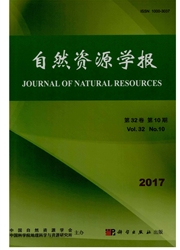

 中文摘要:
中文摘要:
在近几十年气候变暖的背景下,地球上的冰川迅速消融,我国的山地冰川也发生了剧烈变化。山地冰川变化会直接或间接影响地球的生态环境及人类的生活环境,因此对山地冰川的变化进行监测至关重要。各拉丹东冰川的伸缩变化非常明显地揭示了当地乃至青藏高原和全球气候的变迁,极具科研价值。论文在总结国内外研究现状的同时结合所学知识,采用多达5 个时相的陆地资源卫星以及中国冰川目录等有效资料,利用冰雪指数和监督分类方法提取冰川信息,对提取的冰川范围利用空间分析技术进行冰川变化监测。统计分析1973—1986、1986—1992、1992—2004、2004—2009 年4 个时间段以及1973—2009 年整个36 a 间的冰川前进及后退信息,并计算冰川进退变化速率, 对其中5 条变化较大的冰川进行详细的分析统计。结果表明:从1973 年至2009 年近40 a 时间里,各拉丹冬地区既有退缩冰川也有前进冰川, 其中冰川退缩面积为118.64 km2, 前进面积为62.66 km2,冰川总体面积持续退缩。根据相关资料,近40 a 来“三江源”地区气温普遍升高是导致各拉丹冬冰川总体面积持续退缩的关键因素。
 英文摘要:
英文摘要:
In the background of warming in recent decades, glaciers on Earth are rapidly melting. Mountain glaciers in China have also changed dramatically. The changes in mountain glaciers will affect the Earth's ecological environment and human living environment directly or indirectly. Therefore, monitoring the changes of mountain glaciers is essential. The expansion and contraction of glaciers in Geladandong very clearly reveals the Qinghai-Tibet Plateau and the local and global climate change. This paper summarizes the research status in combination with the available knowledge. Using five periods Landsat data with application of snow index and supervised classification method, glaciers information was extracted, then, using spatial analysis techniques, the change detection for the range of the extracted glaciers was made. Glacier advance and retreat information during the four periods of 1973-1986, 1986-1992, 1992-2004, 2004-2009 as well as 1973-2009 time period throughout the 36 years were obtained. The rate of change of glacial advance and retreat was calculated and detailed statistical analysis of five glaciers with greater changes was conducted. The results showed that both glacial advancement and retreatment existed. From 1973 to 2009, the area of glacial advancement was 62.66 km2, while the area of glacial retreatment was 118.64 km2. The total areas of the glaciers had decreased continuously. The temperature has been rising over the "Sanjiangyuan" region in recent 40 years, which is the key factor leading to the continued retreatment of the Geladandong glaciers.
 同期刊论文项目
同期刊论文项目
 同项目期刊论文
同项目期刊论文
 期刊信息
期刊信息
